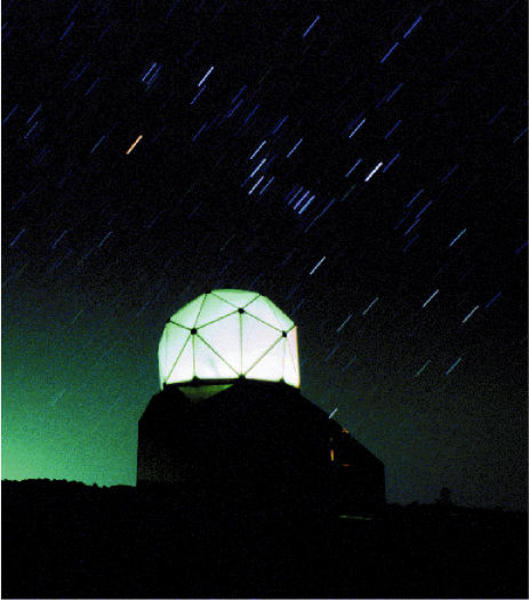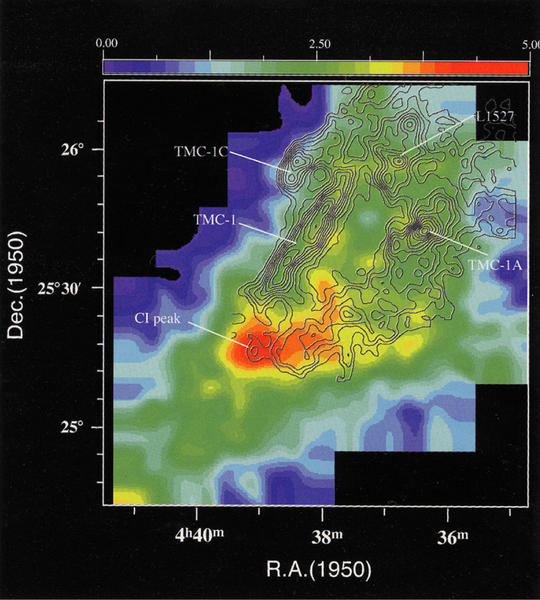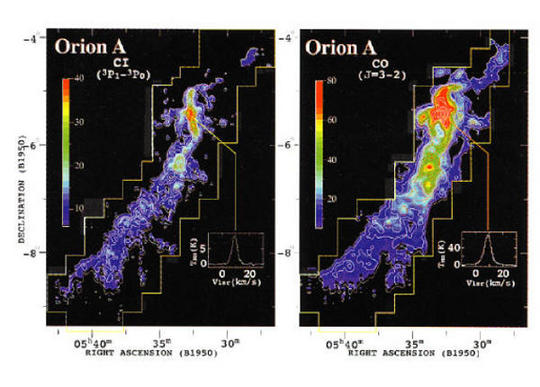
Telescope System
The Mount Fuji submillimeter-wave telescope was constructed in July 1998, and started the observations from November 1998. The main reflector of the telescope is 1.2 m with the surface accuracy of 10 microns, which is enclosed in a space frame radome with a Gore-Tex membrane. Sensitive superconductor mixer receivers are equipped for the 345 GHz, 492 GHz, and 809 GHz bands. The telescope system is controlled in a remote way from the University by using a commercial satellite communication system. With this telescope, we are observing the emission of the neutral carbon atom (CI) at 492 GHz and 809 GHz toward various molecular clouds. On the basis of the distribution of CI, the formation processes of molecular clouds are being investigated.
Observational Results
With this telescope, we have already surveyed 35 square degrees of the sky in the CI 492 GHz emission. We have also mapped some representative regions with the CI 809 GHz line. This is the largest survey ever done for the CI line. An example of the CI distribution obtained toward the HCL-2 cloud in the Taurus region is shown in the figure. The color map represents the CI distribution, whereas the contour map represents the CO distribution. The distributions of CI and CO are apparently anticorrelated. Since the conversion time scale from C to CO by chemical reactions is comparable to the dynamical lifetime of the cloud, the CI rich part of the cloud can be interpreted as a formation site of molecular cloud. This is the first observational example of the molecular cloud formation. Another example is the Orion A giant molecular cloud. Our extensive observations with the Mount Fuji submillimeter-wave telescope first delineated the CI distribution over the whole giant molecular cloud. This result combined with other observational data such as CO and CII will unveil detailed structure and formation processes of the Orion A cloud.






